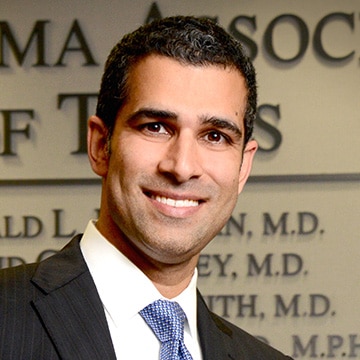When You Have Cataracts and Glaucoma
Cataracts may naturally coexist with glaucoma, have a causative effect on glaucoma, and/or may even be a result of glaucoma surgery.

Patients with both cataracts and glaucoma require special consideration. Cataracts may naturally coexist with glaucoma, have a causative effect on glaucoma, and/or may even be a result of glaucoma surgery.
When a patient has glaucoma that requires surgery, there is a unique opportunity to remove the cataract without significantly increasing the risk of the glaucoma surgery. Additionally, when a glaucoma patient has cataract surgery, it may be combined with a glaucoma surgery which may decrease the patient’s need for glaucoma eye drops or improve eye pressure control without significantly increasing the risk of the surgery in most cases.
Cataract surgery may be combined with one of several glaucoma surgeries including trabeculectomy, glaucoma drainage devices, endocyclophotocoagulation, a microshunt and the spectrum of micro-invasive glaucoma surgeries (MIGS). The MIGS procedures are often combined with cataract surgery since they can usually be performed through the same corneal incision. However, most MIGS procedures rely on the eye’s natural drainage system and may not sufficiently lower eye pressure. There are several MIGS options for your surgeon to choose from and he or she will help decide what is best for you based on several factors such as the stage of your glaucoma, general health, age, lifestyle, and tolerance to glaucoma medications.
Cataract surgery alone may be an option. For example, cataract surgery in mild open angle glaucoma or ocular hypertension has been shown to decrease the eye pressure without the need for any glaucoma procedure.
Cataract surgery in a patient with glaucoma may give rise to unique concerns. In pseudoexfoliation glaucoma there is a higher risk of complications due to weakness in the supportive structure of the natural lens (the zonules). Some newer types of intraocular lenses may not be suitable for glaucoma patients because they affect contrast sensitivity or may cause glare. Eye pressure spikes after cataract surgery are more common in patients with underlying glaucoma and importantly, glaucoma patients are more likely to develop optic nerve damage from a transient increase in eye pressure. Eye surgeons who regularly care for patients with both cataracts and glaucoma are prepared for the unique challenges associated with performing combined cataract and glaucoma surgery.
To conclude, in patients with coexisting cataract and glaucoma, surgical treatment requires special considerations. There are several treatment options and variables to consider before deciding on the best surgical glaucoma procedure to perform at the time of cataract surgery. A detailed discussion with your eye doctor is important in order to determine the best option for you.
Article by Davinder S. Grover, MD, MPH.
Posted on September 15, 2021.
Last reviewed on March 9, 2022.

Davinder S. Grover, MD, MPH
Dr. Grover is an Attending Surgeon and Clinician at the Glaucoma Associates of Texas, located in Dallas, Texas. He specializes in the medical and surgical management of complex glaucoma as well as cataract surgery. His research interests include international ophthalmology, innovative glaucoma surgeries, and clinical outcomes in medical and surgical glaucoma management.